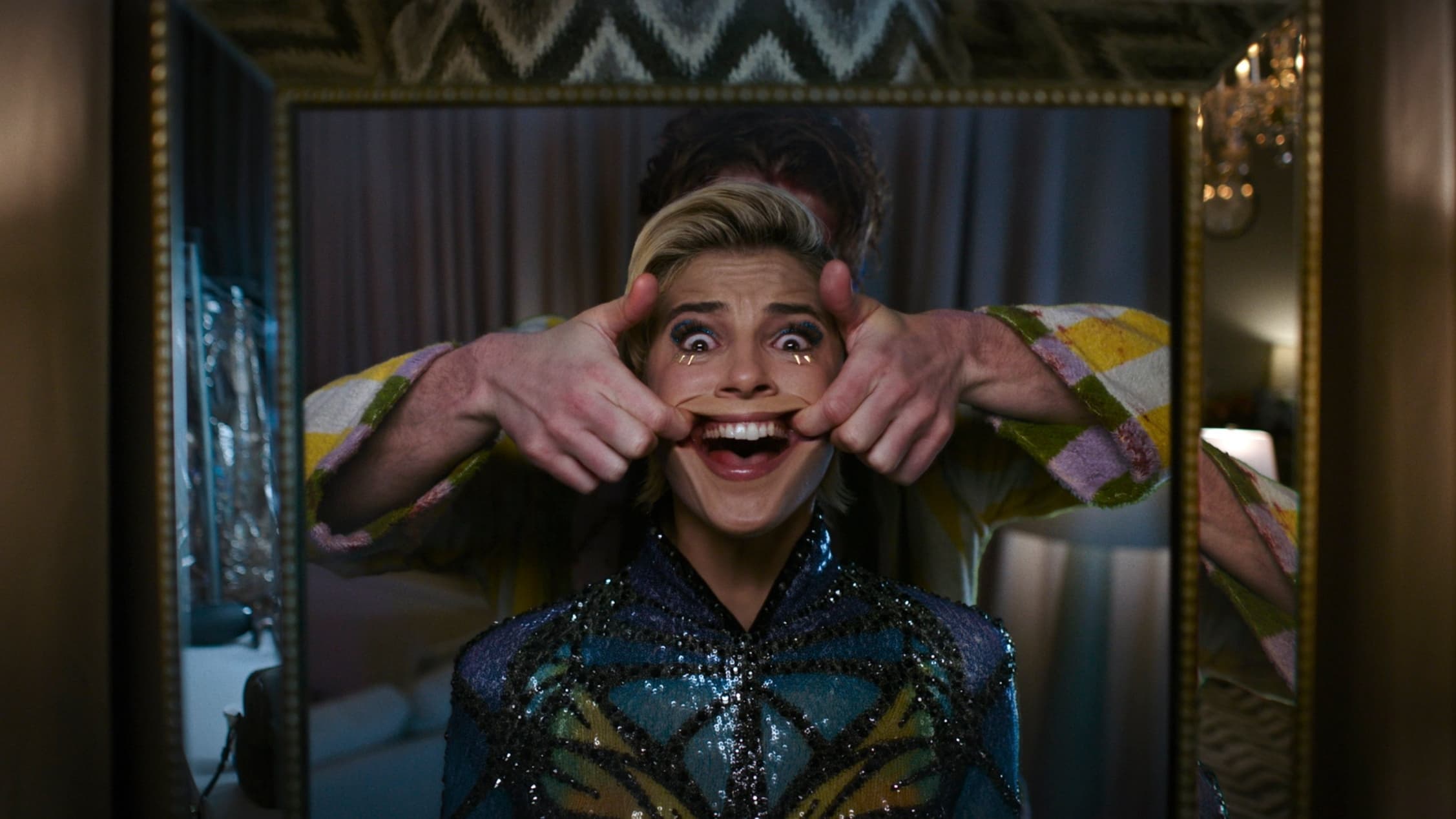
Film Critic Archie Marks reviews the more-than-worthy sequel to the horror hit
Trigger Warnings: mentions of hallucinations, paranoia
What if Smile starred Taylor Swift? That is the question that returning director Parker Finn dares to ask in the terrifying sequel to 2022’s horror smash Smile, which improves upon the original in many ways. Where the first film featured some muddled messaging on generational trauma, the franchise’s sophomore outing crafts an intriguing metaphor about burnout culture and celebrity – all while doubling down on the jump-scares.
Naomi Scott of Aladdin fame turns in a stellar performance as pop star Skye Riley; some months following the death of her boyfriend in a car crash, as well as months of rehabilitation for a public struggle with substance abuse, Riley is back and putting on a comeback tour à la Blackout-era Britney. The production design and choreography during these rehearsal scenes is impressively convincing (especially given the film’s relatively small budget), as though Riley were as ubiquitous a pop star as Spears herself. All seems to be going well, even if Riley is still physically and emotionally fragile.
Despite being watched like a hawk by her mother and assistant, Riley sneaks out one night to get Vicodin from her drug dealer friend Lewis (Lukas Gage). Little does she know that he has inherited the ‘smile’ curse; not long after she enters his apartment, he menacingly smiles at her before smashing his face in with a gym weight (to perhaps unnecessarily gruesome detail). Riley is now cursed, at maybe the most pivotal point of her career thus far, when the whole world is watching to see if she will crumble under the stage lights.
Finn continually pulls the rug out from under the spectator with new and subversive scares
A fascinating premise this is, bolstered by Scott’s visceral emotional range. She captures the (smiley) façade a pop star is expected to project as well as the dizzying reality of pop stardom, embodying the Lady Gaga ‘no sleep, bus, club, ‘nother club’ quote to disorienting effect – all the while seeing smiling faces everywhere. In the hands of a less skilled director, Smile’s central conceit would wear thin quickly. Thankfully, Finn knows this, and continually pulls the rug out from under the spectator with new and subversive scares (a scene with Riley and her dancers in her flat comes to mind). Intriguingly, where much of the first film was set in isolated rooms or in darkness, much of Smile 2 takes place in broad daylight, where Riley is surrounded by assistants and crew. This gives Finn and his creative team new methods with which to scare us, playing with lighting and score to horrifying effect.
One terrifying scene in particular comes midway through the film. A nervous Riley attends a fundraiser and is expected to give a prepared speech; when the teleprompter freezes, she improvises and ends up going on a tangent about how being a celebrity has essentially derailed her life. When she accidentally injures a patron and becomes the villain of the night, the message is clear: popstars are never allowed to be open about their struggles, not truly, and when they are we throw them to the stocks and pelt tomatoes at them. The film forces us to hold a mirror to our own complicity to the downfall of popstars, from Amy Winehouse to, more recently, Liam Payne. This all culminates in a final shot, which won’t be spoiled here, but is a visual representation of this very message.
The stark reality faced by many a popstar manifests itself in interesting ways. For example, an encounter with a crazed male fan at a meet-and-greet later leads Riley to hallucinate his appearance in her bedroom later that night. The terror is not the hallucination itself, but the fact that this stalker could easily have been real, and Finn cleverly toys with our idea of what is real to make poignant observations on celebrity. When Riley seeks help and tries to explain her hallucinations, the people around her dismiss her stories as drug-fuelled bouts of paranoia. She becomes isolated and overworks herself, thus making her an easy target on which the entity can prey.
It is bloodier than the first and every bit as harrowing with its imagery—I confess that I had to sleep with the lights on
This may invite reading Finn’s film as an examination of burnout culture, the mindset of ‘hustling’ and long, unfair hours that are unrealistic, inevitably leading to poor mental health. In this way, when Riley is pushed into doing the tour, against her good judgment, by her overbearing mother (a stern Rosemarie DeWitt), she begins to implode like a dying star. The ‘smile’ entity becomes a metaphor for how not only pop stars but the average worker can be eaten alive by doing too much, and how this ‘grind’ attitude continues to be perpetuated anyway. The people around Riley watch as she crumbles, leading to a killer ending that sets up a wild premise for a potential third film.
First and foremost, though, Smile 2 is fun. It is bloodier than the first and every bit as harrowing with its imagery—I confess that I had to sleep with the lights on the night after I watched it. Though Finn’s script, in particular his dialogue, is weak in places, and despite the pacing being a touch uneven, the resulting film is an ultimate win for horror fans and Smile purists, expanding the lore while keeping it shrouded in enough mystery to keep it scary. To be a celebrity is to be expected to keep up appearances, Finn contemplates with his film, to wear the happy face. What happens, then, when it hurts to smile?
Verdict
Anchored by Naomi Scott’s impressive emotional palette, Smile 2 doubles down on the scares and examines celebrity and burnout culture in all its ugliness. Horror fans will smile, indeed.
8/10
Read more from Film:

Comments